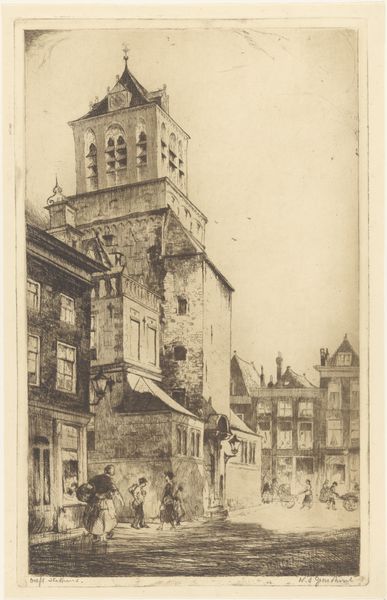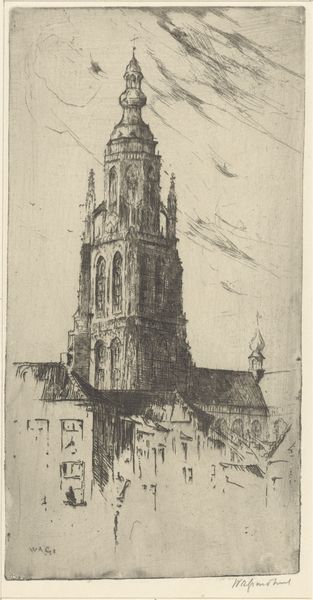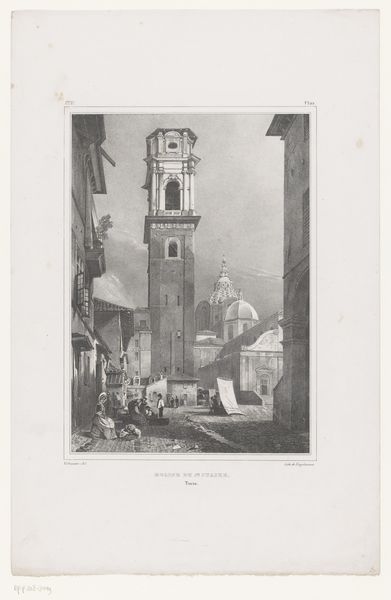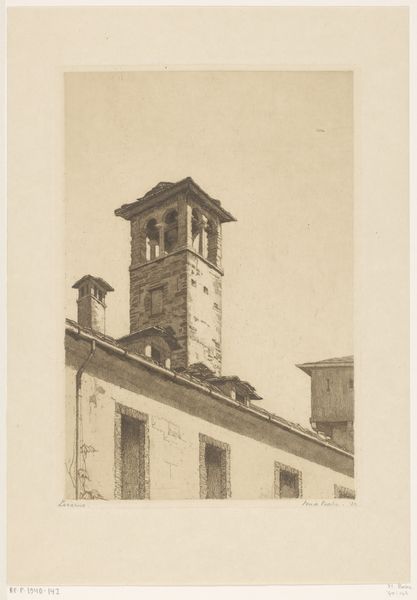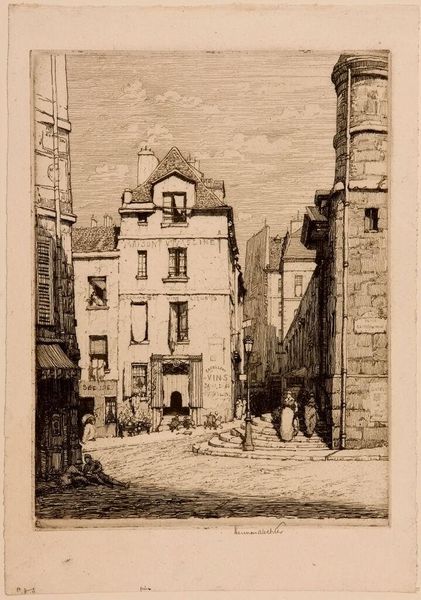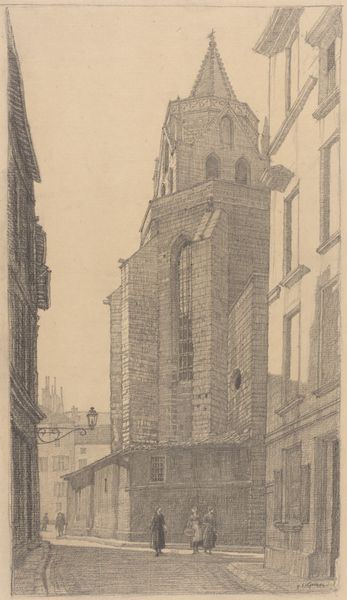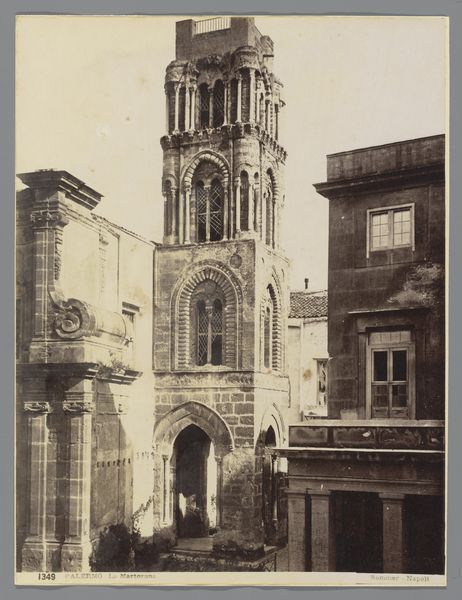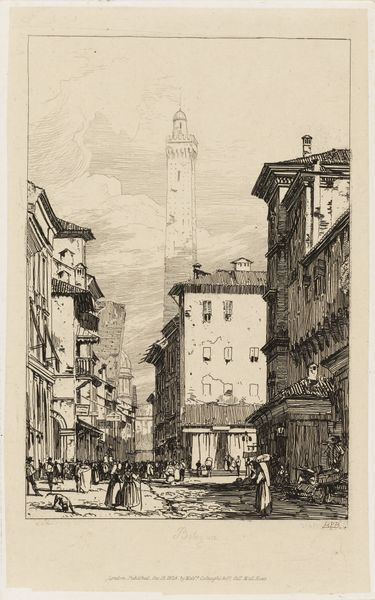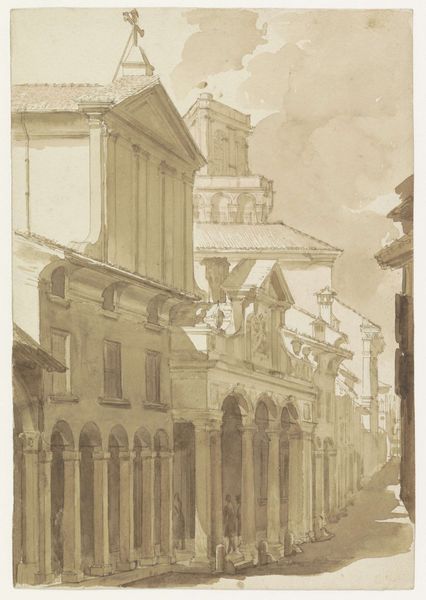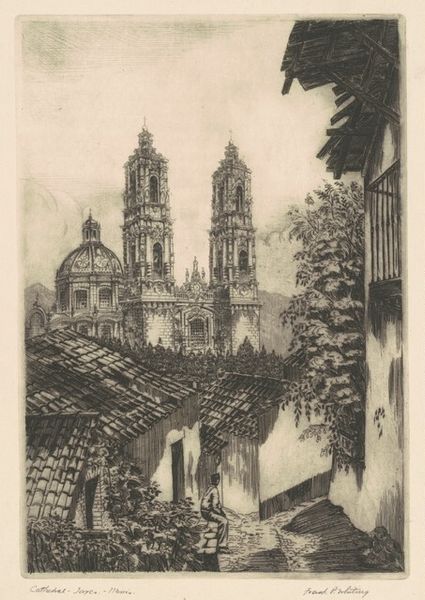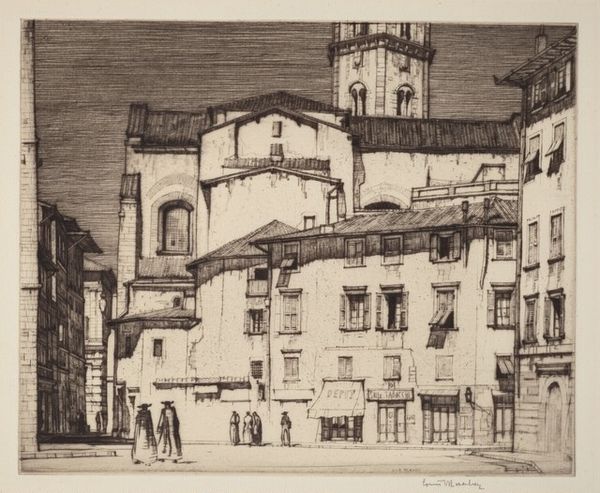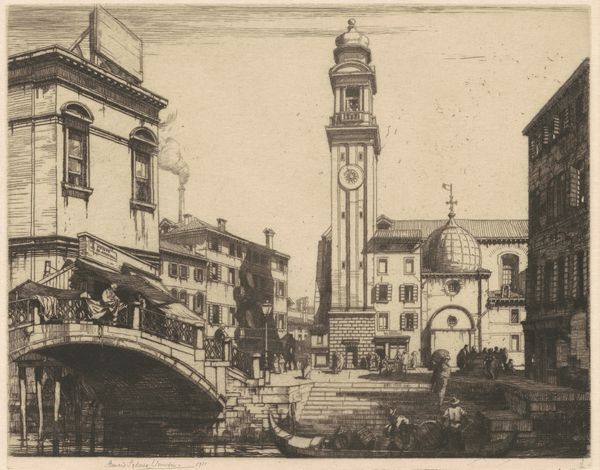
print, etching
# print
#
etching
#
landscape
#
cityscape
#
realism
Copyright: National Gallery of Art: CC0 1.0
Editor: Here we have Louis Conrad Rosenberg's "Santa Cecilia, Ronda," an etching from 1926. It gives a powerful sense of place, capturing a monumental church tower. What strikes me is how he contrasts the solid architecture with the lively street scene. What stands out to you in this piece? Curator: It’s interesting you point that out! The image, considered historically, raises questions about how European architecture was presented to American audiences in the early 20th century. Etchings like this were often made into prints and sold as souvenirs or displayed in middle-class homes. How do you think the artist wants the viewer to relate to the historical weight of the image versus its potential as a mass-produced object? Editor: That’s a great question. It feels like he’s trying to balance a sense of reverence with a casual observation of everyday life. The inclusion of ordinary people milling about does kind of humanize what might otherwise be an intimidating, inaccessible structure. But the angle, looking up at the tower, also suggests that historical importance. Curator: Exactly. And think about how an American audience might see a depiction of Spanish religious architecture like this. Would it represent a kind of old-world glamour, something distinct from their own emerging national identity, or an assertion of shared values and international cooperation through art during this interwar period? Editor: So it’s less about the building itself, and more about how the image functions in society and in relation to different audiences? Curator: Precisely! Etchings, like architectural monuments, become potent carriers of cultural meaning, distributed and consumed within a complex social and political context. This image allows us to interrogate assumptions and desires from that time period. Editor: Wow, I didn’t think about it that way. It’s incredible to see how much the context shapes our understanding. Thanks! Curator: My pleasure. Always consider the role an artwork has within a society!
Comments
No comments
Be the first to comment and join the conversation on the ultimate creative platform.
